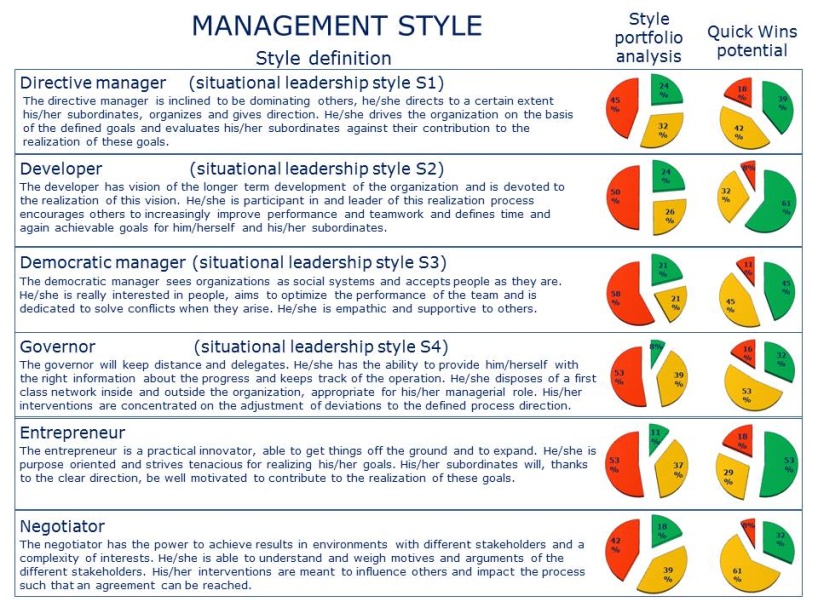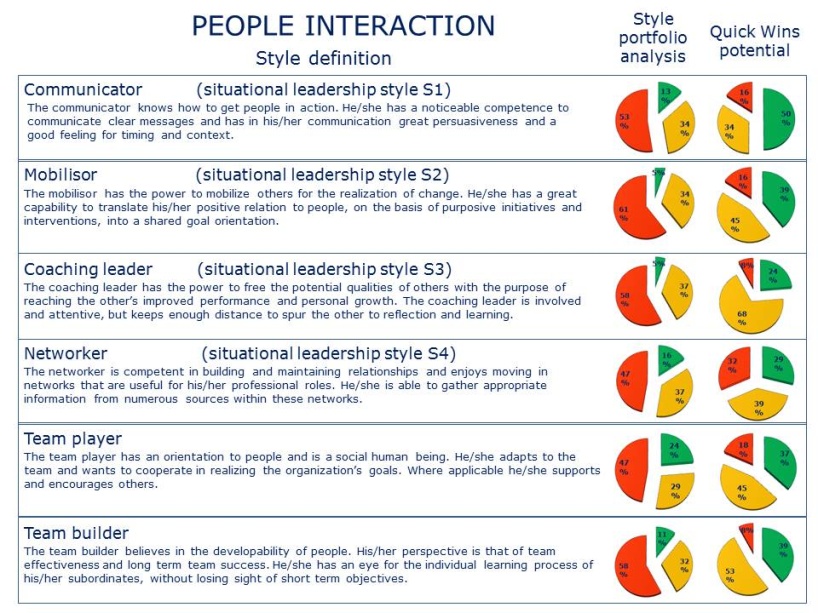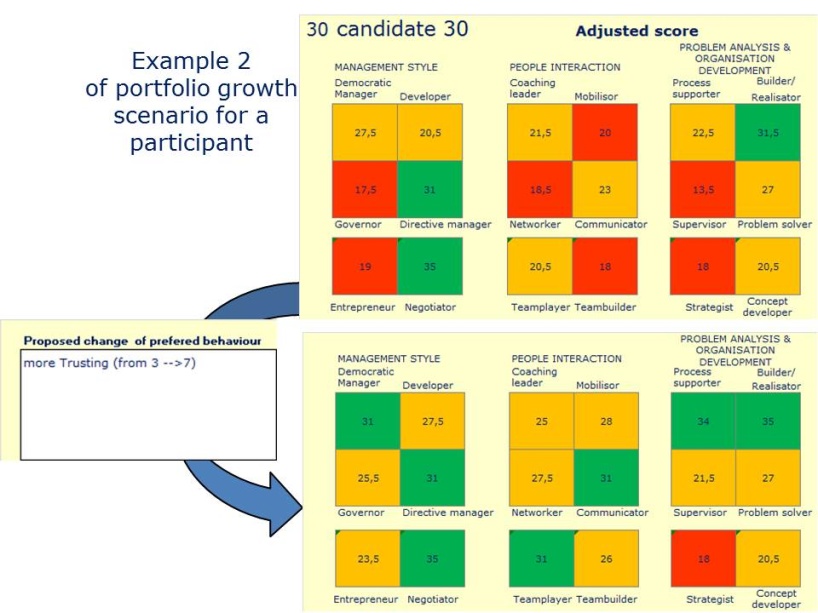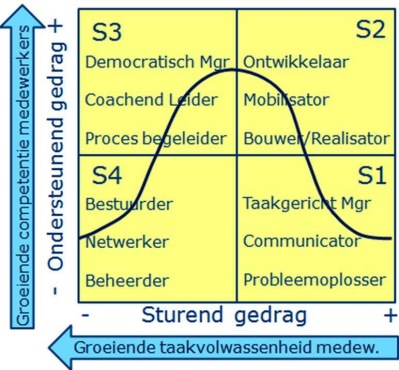DEVELOPMENT OF LEADERSHIP STYLE PORTFOLIO
Leadership Style Concepts
In defining the different leadership styles that can appear in a leadership style portfolio, LDpe started with an inventory of styles that we saw leaders apply in different situations.
We found a large number of different styles. After this inventory, each of the styles was related to a number of clearly defined competencies of the LDT competency model. Five connections were made for each style. And then, from this content, a clear description of the style was formulated as a definition.
A parent structure was defined with 3 different dimensions: Management style: from the perspective of the leader's role as a manager; Interaction with people: from the perspective of interacting with others; Problem analysis and organizational renewal from the perspective of the organizational process.
Inspired by the work of Blake & Mouton, Reddin and Hersey & Blanchard, the styles were organized based on the Managerial Grid and the four dimensions of the situational leadership model. You can see the created structure below.
In this way, the situational leadership model has been given 3 extra dimensions (see picture on the right).
The leader can vary his/her styles: with regard to operating from his position and responsibilities (e.g. when making decisions), with regard to interacting with others, and with regard to matters related to the development and change of the organization.
The LD Toolbox measures the style portfolio and helps the leader to development the porfolio, by defining indididual simulation scenario's.
Management and leadership style theories
The beginning of modern management thinking began with the Scientific Management (Taylor) and the Administrative School (Fayol); Before that, organizations were seen as bureaucratic systems in which only attention was paid to organizational processes. The Human Resource movement (Lewin) emerged in the 1940s and 1950s. That was more or less initiated by the findings of the Western Electric Hawthorne experiments; The HR movement brought attention to the relationship between leaders and their subordinates. The first typology of leadership styles was defined in the 1960s (Likert, New Patterns of Management); three types of leadership styles dominated the dialogue: the democratic leader, the autocratic leader and the 'laisser-faire' leader; thinking about 'good and bad' leadership dominated there. A more systematic approach to management and leadership style theories emerged through the development of the managerial grid (Fisher and Fleischman, Blake and Mouton): Attention to people/relationships versus task/results. In the early 1970s, Reddin came up with his 3-D theory in which he introduced the concept of Management Effectiveness. Hersey & Blanchard built on this further in the 1980s and developed the Situational Leadership Model. In the 1990s, the more dynamic context of organizations led to new theories focused on the difference between operational management and change management (transformational management): e.g. Ralph Stacey on 'Ordinary management' versus 'Extra-ordinary management'.1]
1] Ralph Stacey, Strategic Management and Organizational Dynamics, Ch. 3 Ordinary and Extraordinary Management.
Every leader has a unique combination of styles that enable him/her to operate successfully in different situations. We call this his/her style portfolio.
The style portfolio of leaders in an organization
For the purpose of further growth of the organization, top management could ask themselves a number of questions, such as:
- How effective is the leadership behavior of our managers?
- How can the development of our high potentials be accelerated?
- How can the styles and roles portfolio of our leaders and leading professionals be quickly expanded?
With the help of the Leadership Development Toolbox (LDT) we are able:
- To create an overview of the style portfolio of the leaders of your organization
- To make individual leaders aware of their potential qualities and possible pitfalls
- To support improvements through indicating individual development scenarios
- To accelerate talent development
Below we show an inventory of style portfolios from a representative group of 38 participants. We also show the Quick Wins scenario for three participants below, including the potential effects. We will classify the participants into 3 categories: Probably fit for role (scores above 30); Not yet fit for role (between 20 and 30); Not fit for role (scores below 20).
In the charts below we show in percentage terms how many leaders in the group in question are suitable, not yet suitable or unsuitable for the role (i.e. master the style, not yet master, not master). In the Quick-Wins potential column we show the potential growth of the group of participants when using the individually defined Quick-Wins program.



Examples of Individual Quick-Wins programs
The LDT simulation module helps the participant to analyse the impact of conscious adjustment of behavioral preferences.
By changing his/her behavioral preferences, the participant can strengthen his/her competencies and develop a broader style portfolio, which allows him/her to handle a greater variety of situations.








